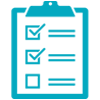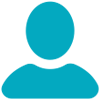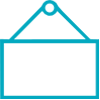Whether you are a graduate, Professional, Manager or Executive you are not alone if you are not sure what you want to do next. It is essential that you carry out quite a lot of research to find out about jobs and careers in the Transport, Logistics, Supply Chain and Commercial Vehicle Automotive sectors. You must also look at what jobs are open to you from the point of view of qualifications, location, opportunities and your work / life balance. You may have to relocate, re-train and certainly take a few risks, trying different avenues before you find out what you want. Through this process you must always keep motivated, be flexible and think creatively, work to identify what you want by speaking to people in the positions that interests you. After research you must then prepare to sell yourself. The first medium is through Curriculum vitae. Your CV is the first impression that you’ll make on a potential employer so it’s important to get it right. Please read the following section for help and advice. (TCR also offer a FREE CV writing service, just call or email and ask.
This CV style is intended for School leavers, Graduates and Entry-level job seekers (i.e. those with less than one-two years work experience). It should clearly demonstrate both your potential to future employers and what you specifically have to offer. As work experience is limited, the emphasis will be on qualifications and personal qualities. It will focus on identifying skills, experience, achievements, career aims and job targets. Again always begin with a personal profile.
This CV style is aimed at those with established careers but in non-managerial positions. It will demonstrate career experience, accomplishments, achievements and problem-solving ability. The emphasis will be on highlighting your abilities and strengths. It will focus more on actual skills and experience gained, and less on qualifications.
This style is aimed at those in Management or Director/Board level positions. It will demonstrate career experience, key achievements, problem-solving ability, contributions, initiative and leadership. The emphasis will be on career history and skills, rather than qualifications. It will focus on experience gained and successes, as this is more important than competencies at this stage in your career.

Always prepare for an interview, spend time investigating the company. Your consultant will be able to give you a good insight into the organisation but your private research will make the difference.
First of all you need to know all about the organisation to ensure you are interested in the company, the industry they trade in and that they can take your career in the direction you wish.
Find out about the company's competitors, its market presence, its plans for growth, its origins and background. Clients will always ask at interview stage “What do you know about the organisation?” And “Why you want to join them?”. If you haven’t done your research you will not get the job.

Always write a number of questions relating to the position you are going for: the role in relation to the organisation? Where you will be allowed to take the position? Will you be able to mould the position? Promotional prospects? The organisations/departments future growth plans etc? This is the kind of preparation that will separate you from your competition.
Many clients are impressed if you take the list of your questions into the interview, this shows you are methodical and want to get the most from the interview.
"The quality of your life is determined by
the quality of the questions you ask"
Which is true, the more information you get, the more knowledge you get. Always ask open questions and lots of them.

If you possess materials you have produced at previous organisations or impressive sales figures, training manuals, certificates, licences etc, that are relevant for the role, take them with you, be proud of them. Remember if you don’t sell yourself no one else will.
"Mechanics of Communication". Many clients have said to us - “I will know the right person as soon as they walk through the door”. First impressions are extremely important -always be smartly dressed, a suit, shirt, tie/blouse, clean shoes. Remember Straight posture, head held high, slouching implies laziness.

firm handshake, eye contact at all times, introduce yourself. Remember the interview is a two way process and it is crucial to take this opportunity to establish a firm dialogue. Avoid questions about money and annual leave (especially at an initial stage), as these appear very negative.
The interviewer will usually have a structured pattern of interviewing. Always listen to their introduction of the organisation and position, although there will be time for questions, if you have a question at this time, do not interrupt, either write it down for later or upon finishing this section, politely inform the interviewer you wish to ask a question.

be clear and concise, never waffle. Take your time over the questions they ask you, if you are ever struggling over a question, don’t worry, ask if you can have a moment to think about it.

Many interviewers do not like to be put on the spot, however always close an interview. The way you do this will depend upon the personality of the interviewer.
You should always close the interview
ascertaining when the next stage is or when a decision will be made.
Always thank them for their time and if you are interested you may
voice your interest at this time, informing them you are
looking forward to their decision.